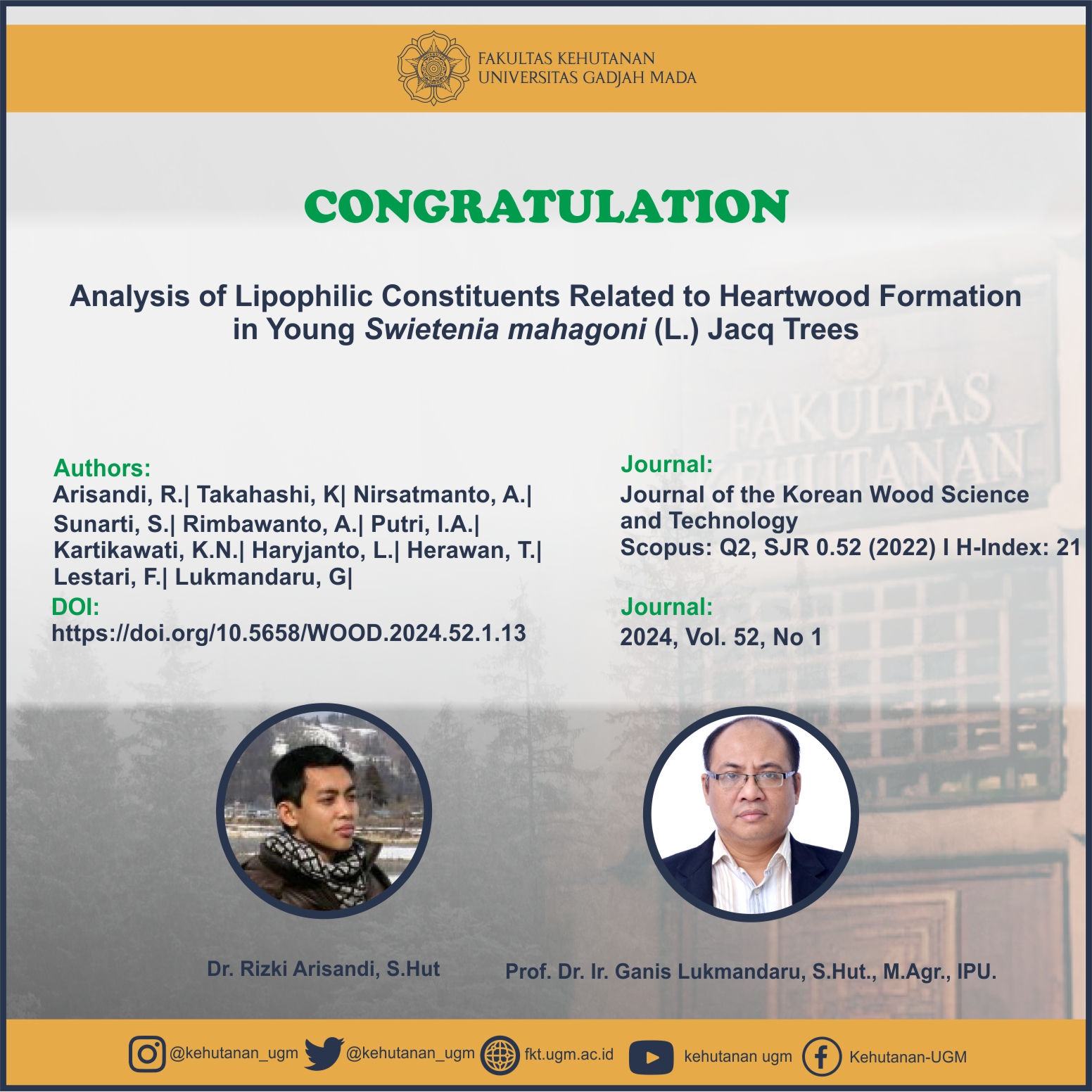
Abstract:
Swietenia mahagoni is one of the commercial timbers in Indonesia. Mahogany heartwood is an important characteristic as it relates to the natural durability and aesthetics of the wood. Lipophilic extractives are known to be involved in the heartwood formation process. Therefore, this study aims to determine the lipophilic compounds associated with heartwood formation. The n-hexane extract from sapwood and heartwood samples (1 to 5 years) was analyzed by gas chromatography-mass spectrometry. The results showed that the content of n-hexane extract ranged from 0.76% to 2.45% based on dry wood. The main group of compounds identified in the lipophilic fraction consisted of sterols (β-sitosterol, stigmasterol, campasterol, and cyclolaudenol), fatty acids (palmitic, oleic, linoleic, and stearic acid), and hydrocarbons (pentadecane, 1-octadecane, hexadecane, cyclotetracosane, cycloeicosane, and cyclooctacosane) after heartwood formation. In addition, the hydrocarbon fraction was the largest, followed by sterols, fatty acids, and 1-heneicosanol. In the radial variation, the distribution of fatty acids was greater in the sapwood than in the heartwood (4-year-old). However, the reverse pattern was found at the age of 5 years. The lipophilic fraction was generally more abundant in the heartwood compared to the sapwood, especially at 5 years of age, with much higher levels than when the heartwood was forming (4 years). These findings show that when the heartwood formation begins, the lipid composition was not fully metabolized at the beginning of heartwood formation compared to 5-year-old trees.
Keywords: lipophilic extractive; heartwood formation; sterols; fatty acids; Swietenia mahagoni
SDGs:
1. SDGs 4:Quality Education
2. SDGs 12:Responsible Consumption and Production
3. SDGs 13:Climate Action
4. SDGs 15: Life on Land
Link Document:
Download
